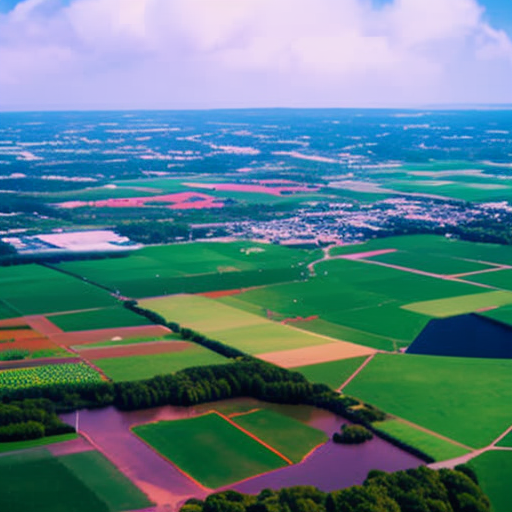Air Masses and Fronts: A Detailed Summary
Summary:
Air masses and fronts play a crucial role in shaping weather patterns around the world. Air masses are large bodies of air that have similar temperature and humidity characteristics. They can cover vast areas and remain relatively stable for several days. When two air masses with different characteristics meet, a front is formed. Fronts are the boundaries between air masses, and they often bring changes in weather conditions.
Air Masses:
Air masses are classified based on their temperature and humidity characteristics. There are four main types of air masses: polar, tropical, continental, and maritime. Polar air masses form near the poles and are characterized by low temperatures. Tropical air masses form in the tropics and are associated with warm temperatures. Continental air masses form over land and are typically dry. Maritime air masses form over oceans and are moist.
The characteristics of air masses are influenced by the surface over which they form. For example, maritime air masses are moist because they form over oceans, while continental air masses are dry because they form over land. The movement of air masses is driven by prevailing winds and pressure systems.
Fronts:
Fronts are the boundaries between air masses. There are four main types of fronts: cold fronts, warm fronts, stationary fronts, and occluded fronts. Cold fronts occur when a cold air mass advances and replaces a warmer air mass. Warm fronts occur when a warm air mass advances and replaces a colder air mass. Stationary fronts occur when two air masses meet but neither advances. Occluded fronts occur when a cold front overtakes a warm front.
When a front passes through an area, it often brings changes in weather conditions. Cold fronts are associated with the rapid lifting of warm air, leading to the formation of cumulonimbus clouds and potentially severe weather, such as thunderstorms. Warm fronts are associated with the gradual lifting of cold air, leading to the formation of stratus clouds and steady precipitation. Stationary fronts can bring prolonged periods of cloudy and rainy weather. Occluded fronts often bring a mix of weather conditions, including precipitation and cooler temperatures.
Weather Patterns:
The interaction between air masses and fronts is responsible for various weather patterns. In the mid-latitudes, where polar and tropical air masses frequently meet, weather conditions can be highly variable. The movement of air masses and fronts can result in the formation of cyclones and anticyclones.
Cyclones are low-pressure systems characterized by counterclockwise rotation in the Northern Hemisphere. They often bring unsettled weather, including rain, strong winds, and sometimes severe storms. Anticyclones, on the other hand, are high-pressure systems characterized by clockwise rotation in the Northern Hemisphere. They are associated with stable weather conditions, such as clear skies and light winds.
The interaction of air masses and fronts also plays a role in the formation of weather phenomena such as thunderstorms, tornadoes, and hurricanes. Thunderstorms often form along cold fronts, where the lifting of warm air creates instability. Tornadoes can form within severe thunderstorms, where strong updrafts and wind shear create a rotating column of air. Hurricanes, or tropical cyclones, form over warm ocean waters and are fueled by the interaction of warm and moist air masses.
Conclusion:
Air masses and fronts are fundamental components of weather systems. Understanding their characteristics and interactions is crucial for meteorologists to forecast weather conditions accurately. The movement and interaction of air masses and fronts shape the weather patterns we experience on a daily basis, from sunny and calm days to severe storms and hurricanes.












